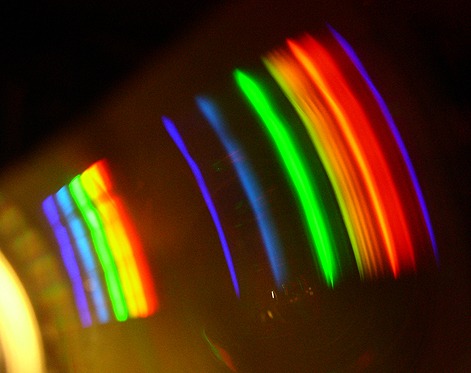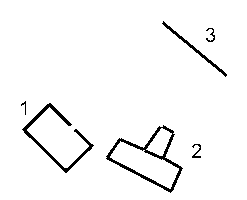indigofuzzy
Hazard to Others
  
Posts: 145
Registered: 1-10-2006
Location: DarkCity, Bay of Rainbows, Moon
Member Is Offline
Mood: Distilled
|
|
Photographing Spectra (fun with a super cheap diffraction grating)
I finally got ahold of a diffraction grating, albeit a dirt-cheap, relatively low quality one.
I bought it at wal-mart as part of a child's toy, a pair of cardboard glasses with diffraction gratings for lenses. Aside from being lots of fun
(rainbow trailers without any lysergic acid amides LOL) They do render spectra around light sources nicely (to the naked eye anyway)
I've wanted for the last two days though to photograph the spectra of a few light sources, especially sodium vapor lamps because they're confusing me.
My first attempts at putting the grating in front of a digital camera produced less-than-stellar results.
So, does anyone have any experience or advice about how to photograph a spectrum through a diffraction grating?
Here's how the pictures are turning out:

(The diffraction patterns around a streetlamp)

(A close-up of the second order diffraction bands)
My guess is that the yellow (which is amber to the eye), green, and blue (which is inidgo to the eye) bands represent mercury vapor. I'm not sure
about the red or violet (which appears as dark blue in the photo, but is "blacklight violet" to the eye)

This is the spectrum from a sodium vapor lamp, and I'm wondering why there's a hole in the spectrum where I'd expect the Sodium D line to be. (That is
what the bright amber group of lines i called, right?) Yeah, the colors are badly distorted, my camera's ccd doesn't respond like my eyes do.
|
|
|
chromium
Hazard to Others
  
Posts: 284
Registered: 27-6-2005
Member Is Offline
Mood: reactive
|
|
I did similar experiments using piece of CD as reflective diffraction grating - with somewhat better results.
Here is photograph of spectra of compact fluorescent bulb that was placed inside cardboard box with small slit. Slit was made as thin cut into piece
of alu foil.

When all think alike, then no one is thinking. - Walter Lippmann
|
|
|
chromium
Hazard to Others
  
Posts: 284
Registered: 27-6-2005
Member Is Offline
Mood: reactive
|
|
Here is setup that was used to make photograph in previous post.
Legend:
1. Cardboard box with slit and bulb
2. Digital camera
3. Piece of CD
There should not be other light source in room and camera must be fixed quite well as exposure time will be longer than usual.
It is easy to split light into spectra with various cheap things but much harder is to make light source that can be used for
spectroscopy.
That same piece of CD could be enough for rough analysis of many mateirals but to make low power electric arc (or other heat source) where testable
substance vaporises with uniform slow rate is entire science.
[Edited on 26-2-2007 by chromium]

When all think alike, then no one is thinking. - Walter Lippmann
|
|
|
Texium
|
Thread Moved
19-11-2023 at 11:49 |